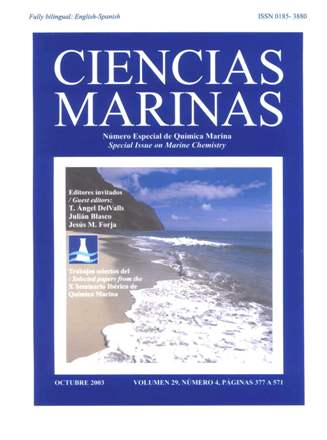Iridium: An option for measurement of the redox potential
Main Article Content
Abstract
Some relevant results are presented of research leading to an alternative redox electrode to platinum. Several different electrodes were subjected to experiments under controlled conditions, mainly in artificial seawater. Among those tested were platinum, graphite, glassy carbon, gold and iridium. Our results, when combined with those estimated by using a model based on the MINEQL+ program, suggest that the O2/H2O2 redox couple is the one that controls the redox potential under these experimental conditions. In well-oxygenated waters (PO2 = 0.21 atm) and pH = 8, the value calculated for EH = 0.748 V and the pE at the surface should read 12.67 (pE = (F/2.3RT) EH = 12.67). However, in practice, the redox potential experimentally measured was only between +0.45 and +0.50 V. Additionally, the presence of H2O2 was determined from our own measurements. Its concentration was estimated at about 10–8 M. This value is in good agreement with values measured and reported by other authors for surface waters under natural conditions. The four sets of measurements that were carried out were: measurements where the O2 concentration of the solution was changed and the pH was kept constant (and vice versa); measurements of several redox couples (including Fe2+/Fe3+, NO3–/NO2– and I3–/I–); measurements in mud flats at San Quintín, Baja California; and measurement of the redox potential in natural seawater and in filtered and UV seawater. Most measurements indicate that the electrode with a response closest to that predicted by thermodynamics is the Ir electrode. We also found that the reaction of Pt, when compared to Ir, appeared to be slow.
Downloads
Article Details
This is an open access article distributed under a Creative Commons Attribution 4.0 License, which allows you to share and adapt the work, as long as you give appropriate credit to the original author(s) and the source, provide a link to the Creative Commons license, and indicate if changes were made. Figures, tables and other elements in the article are included in the article’s CC BY 4.0 license, unless otherwise indicated. The journal title is protected by copyrights and not subject to this license. Full license deed can be viewed here.

